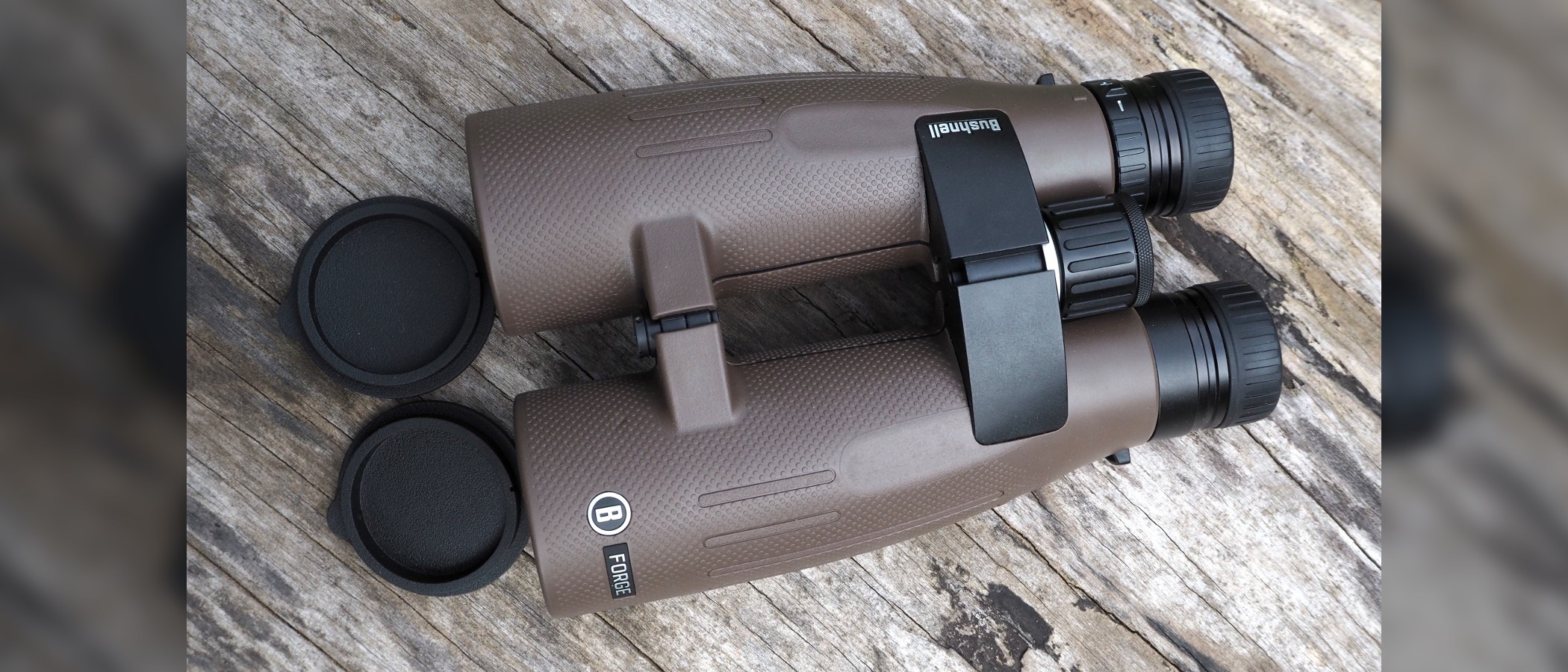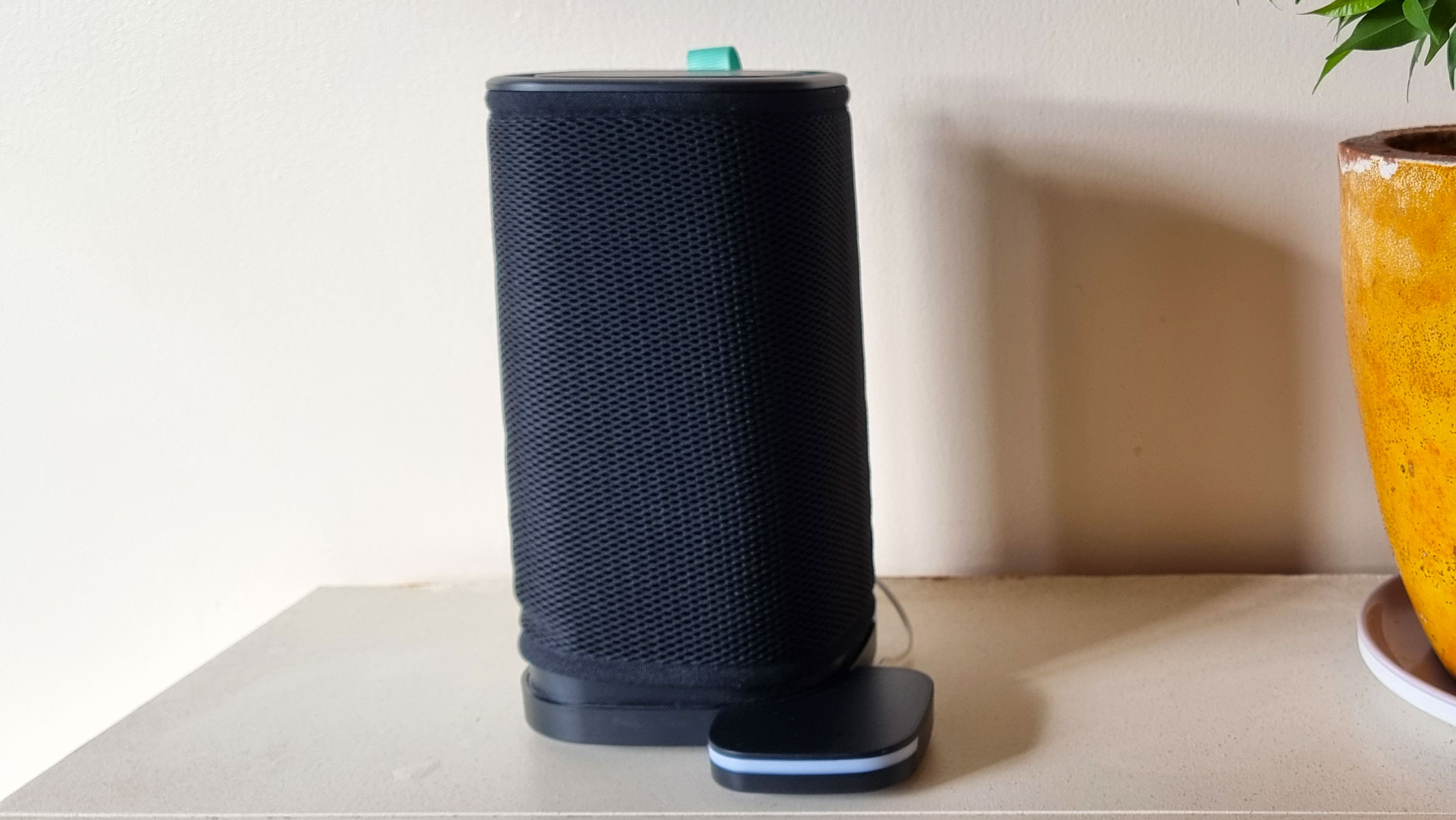Live Science Verdict
These excellent binoculars offer an above average 15x magnification, and a larger than normal 56mm objective lens for increased light gathering. This results in a larger than average pair of binoculars, although they are not prohibitively unwieldy. With a mid-range price tag the Bushnell Forge 15x56 binoculars are good value, especially considering the extensive feature set and class leading performance.
Pros
- +
Robust construction
- +
Multiple lens coatings ensure image
- +
Suitable for most types of long viewing
Cons
- -
A physically large product
- -
Weighs over 2lbs
Why you can trust Live Science
Wildlife watchers wanting to zero in on certain identifiable details from afar, such as plumage that separates one species from another, will find plenty to relish in the Bushnell Forge 15x56 binoculars. And, despite being a little larger and heavier than some rivals, these binoculars are some of the most handsome on the market.
Magnification: 15x
Objective lens diameter: 56mm
Field of view at 1000m: 78 meters
Closest focusing distance: 12ft
Eye relief: 21mm
Weight: 1Kg
Dimensions: 226mm in length
You’ll definitely need a bag or rucksack rather than a jacket pocket to carry them around, although Bushnell does provide various pouches and straps in the box, as alternative carrying methods. This bulk houses a wide variety of quality features: a generous 15x magnification, a huge 56mm objective lens to let in as much light (Bushnell claims 92%) and deliver as clear an image as possible.
Does this put the Bushnell Forge 15x56 binoculars among the best binoculars you can buy? We’ve put them through their paces to find out.
Bushnell Forge 15x56: Features
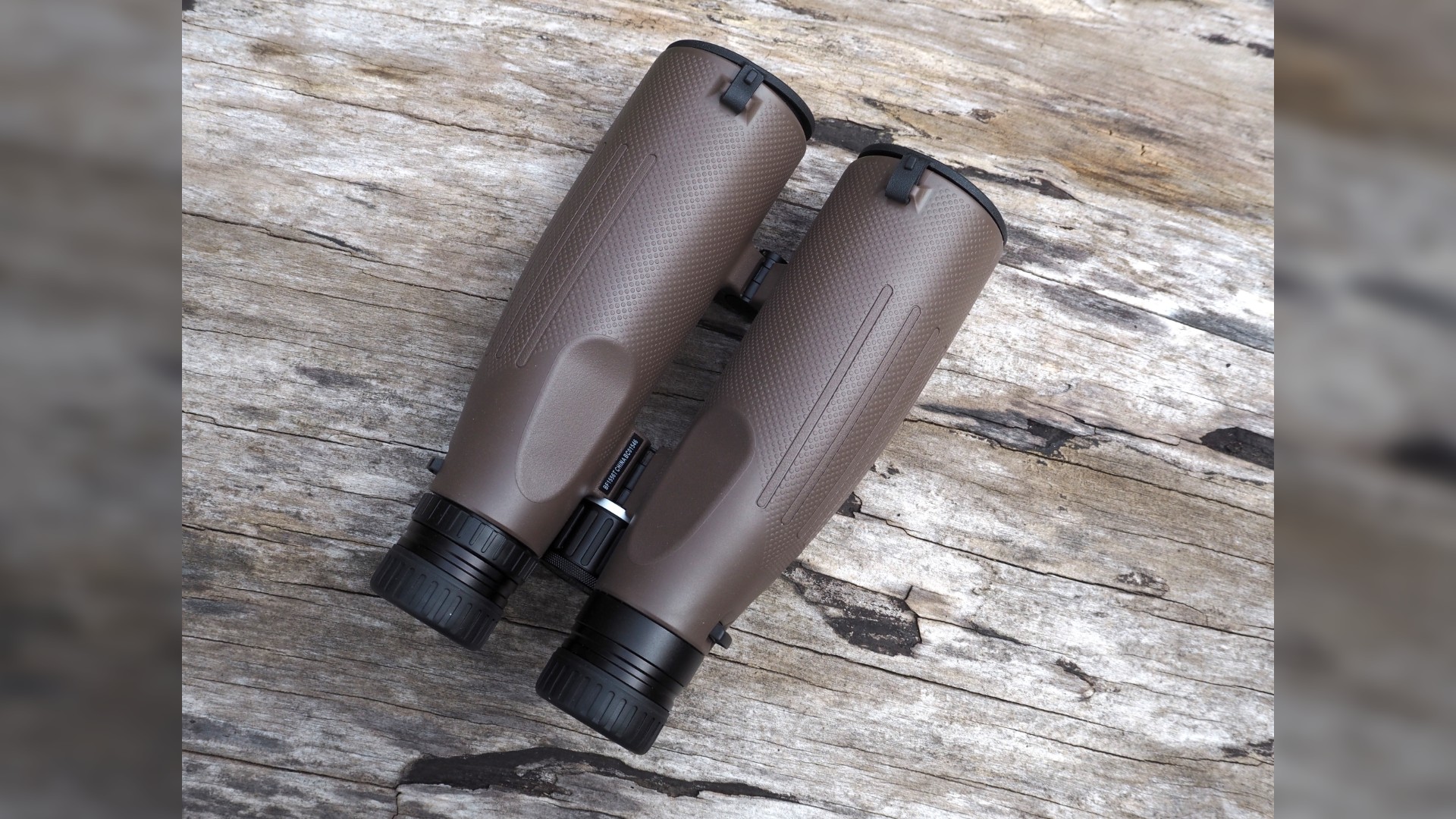
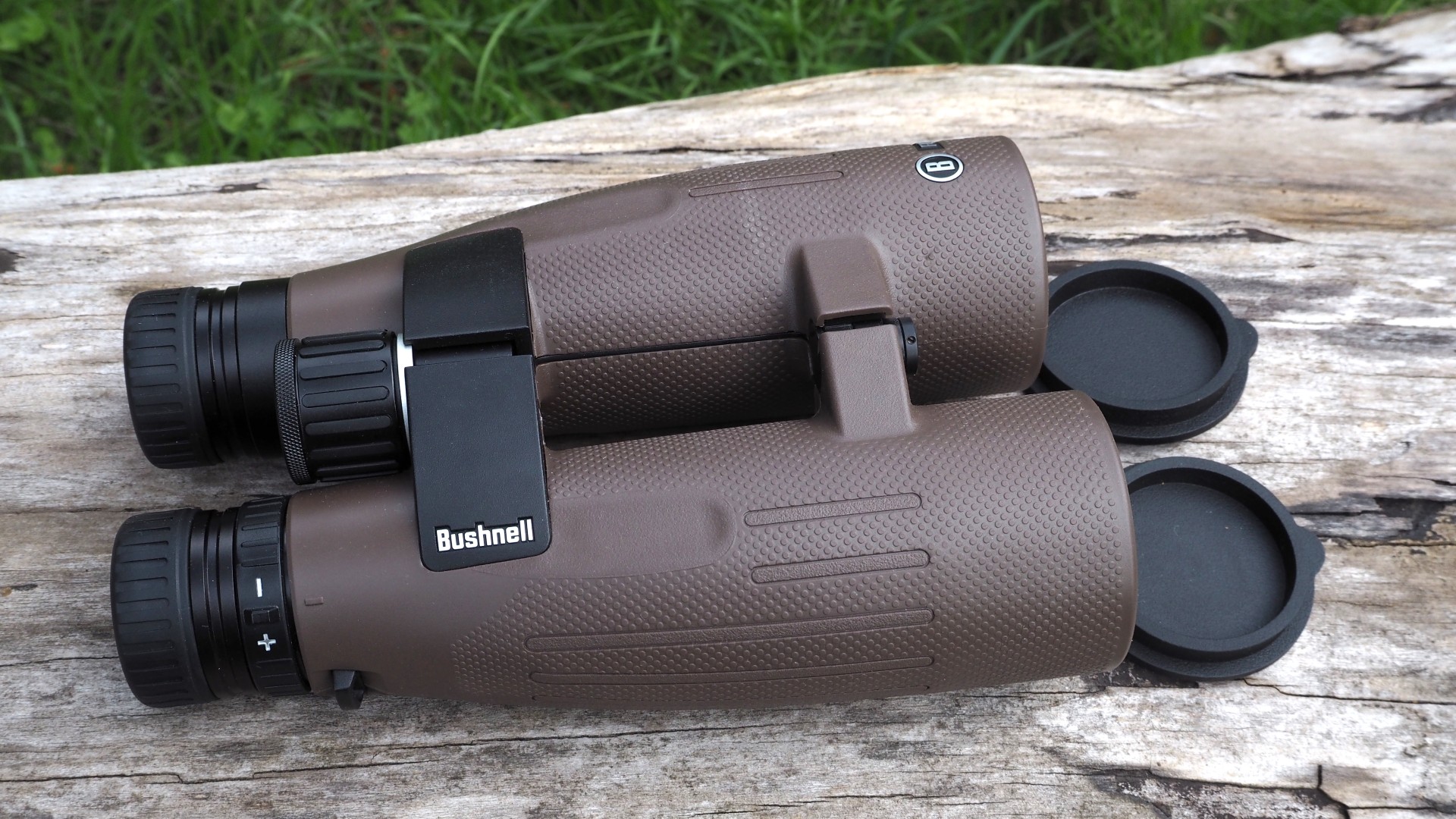
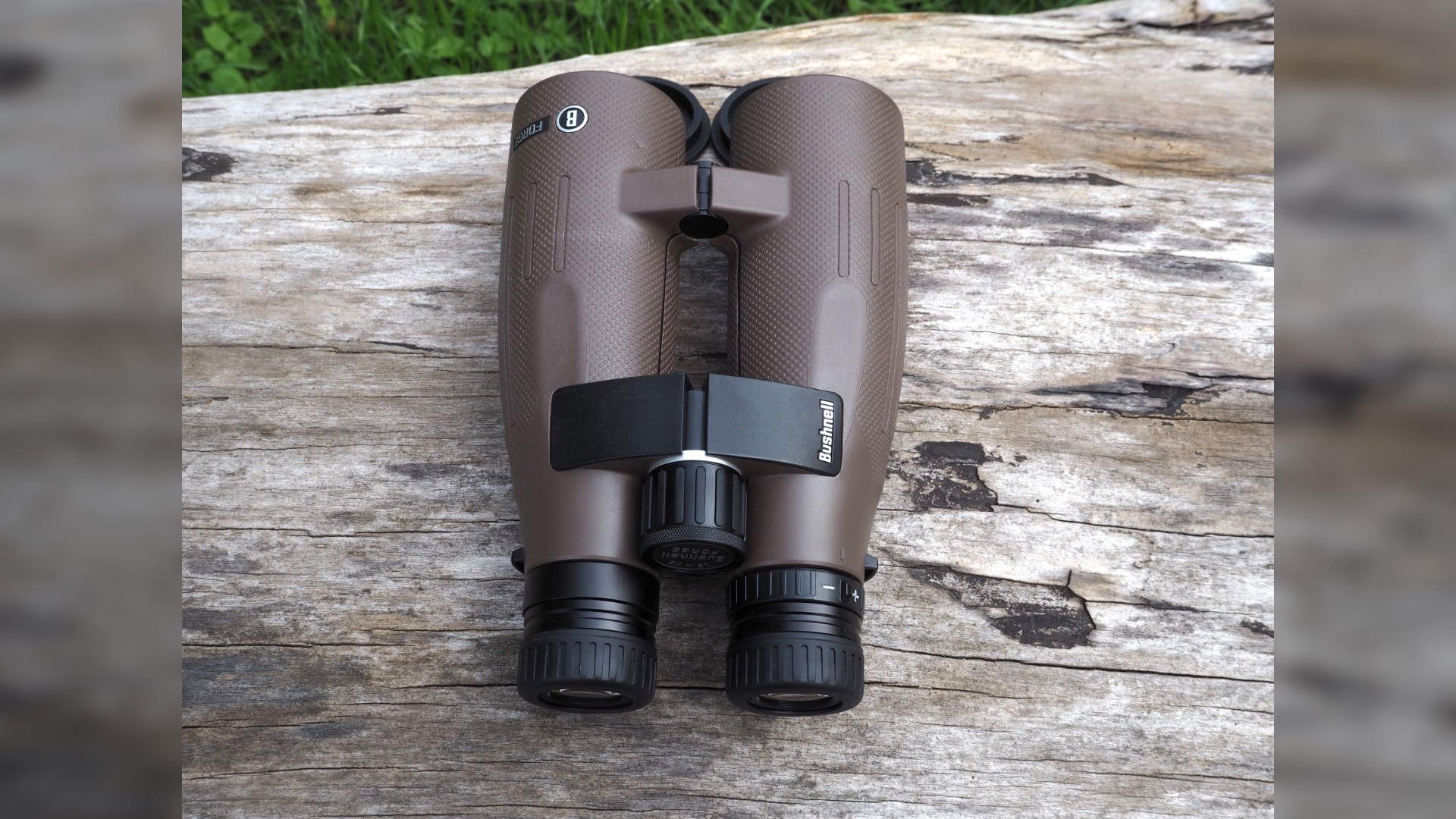
As we would hope, the Bushnell Forge 15x56 binoculars are waterproofed to an IPX7 rating, which translates as being able to be dunked in three feet of water for half an hour. This is due to a generous application of lens coatings, which include what Bushnell claims is its very own exclusive ‘EXO’ barrier protection, a coating that bonds to the glass at a molecular level to repel oil, dust and prevent scratches. Bushnell uses top tier ED Prime glass and BaK-4 prisms in this model — a combination aiming to achieve optimum light transmission.
Tightly fitted and tethered lens caps further protect the glass at the front, and hang down loosely when the Bushnell Forge 15x56 are in use, while the twist up eyecups at the rear are manually adjustable for the comfort of the user. We didn’t find any caps for the eyepieces in the box, however.
A 15x magnification is much more generous than most binoculars too, which typically stick to an 8x or 10x magnification, the extra power bringing the faraway just that much closer for when discerning detail is important. This makes them ideal for wildlife viewing where you can’t get too close for fear of scaring the animal away.
Bushnell Forge 15x56: Design and handling
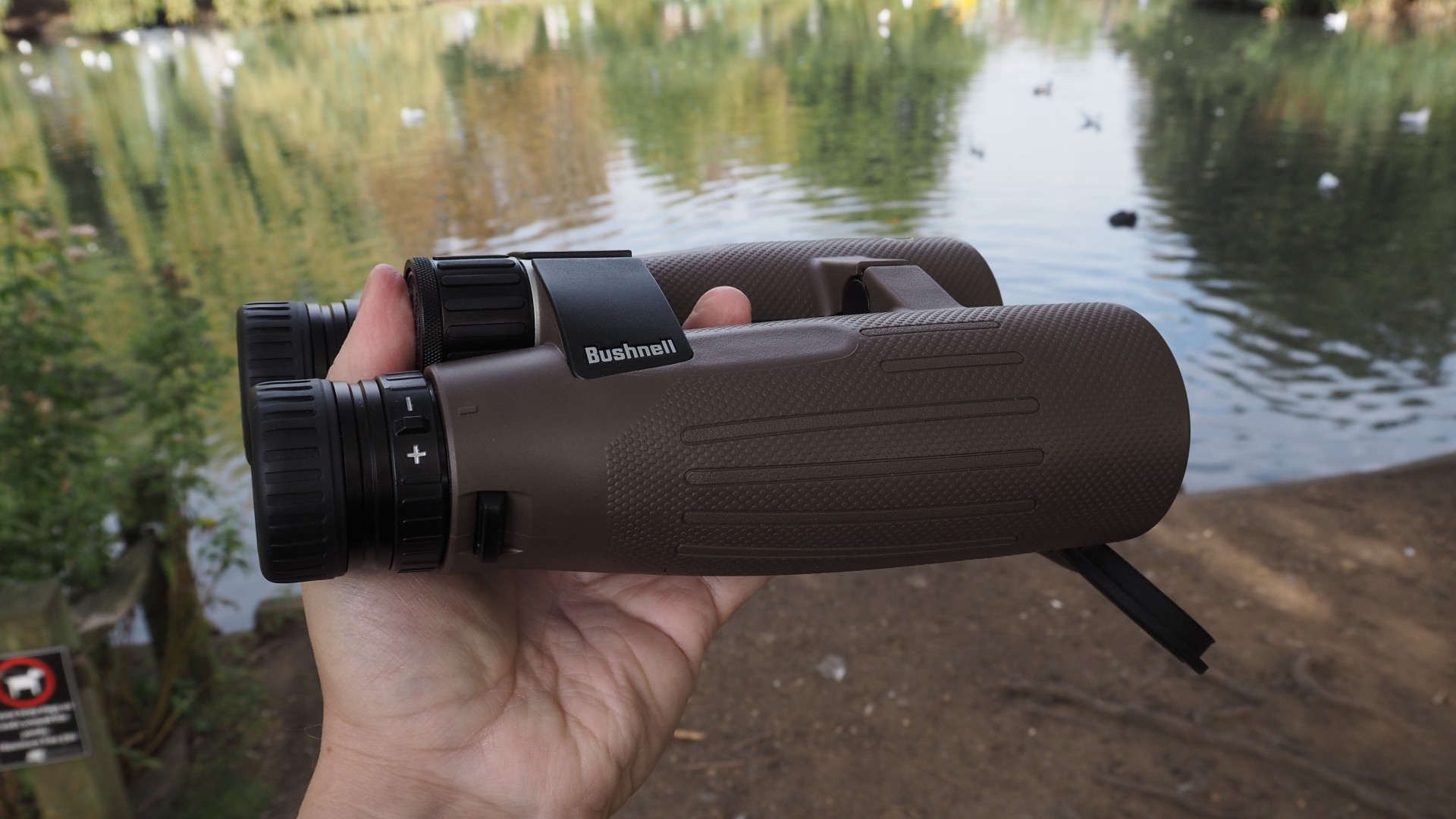
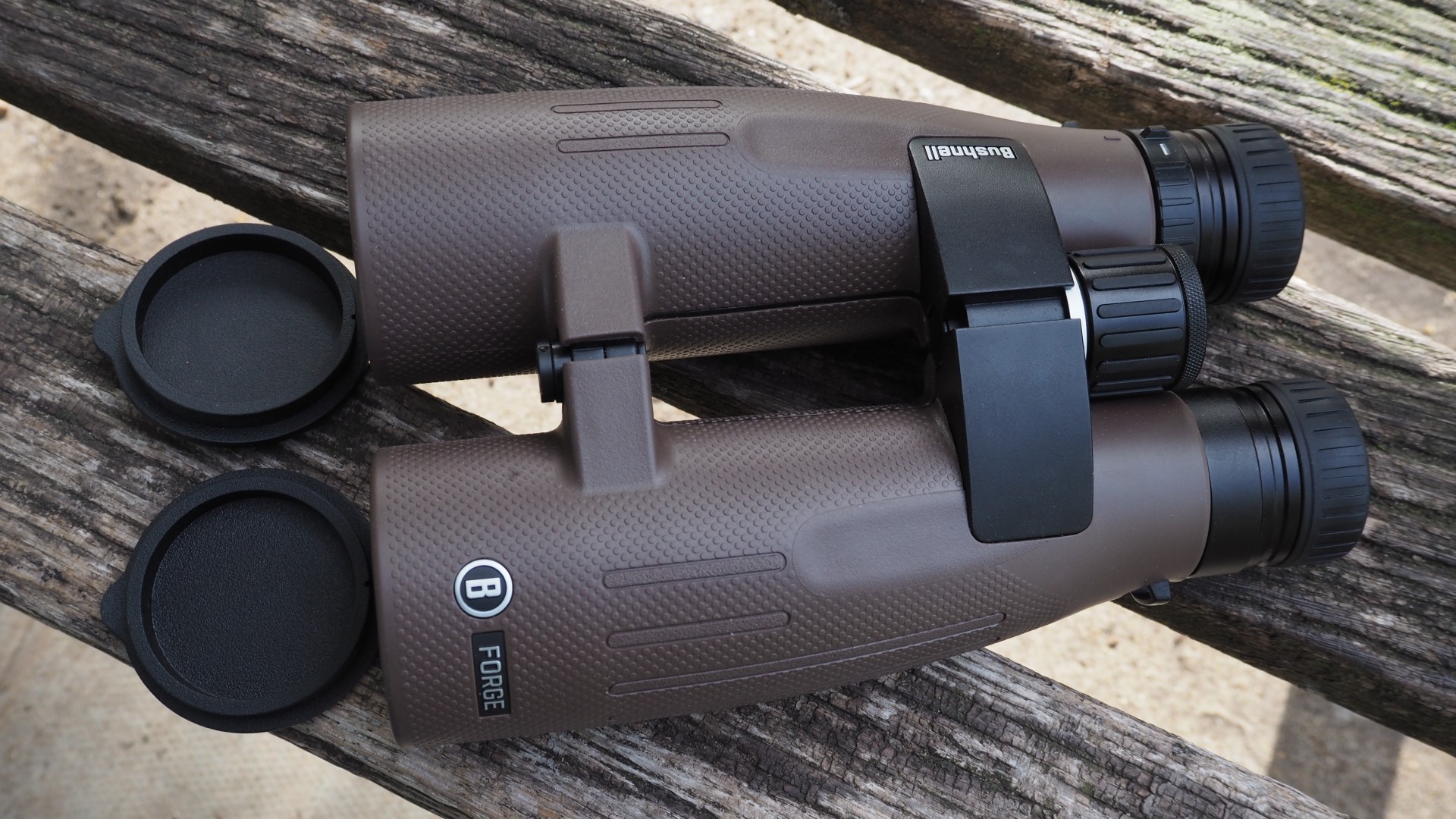
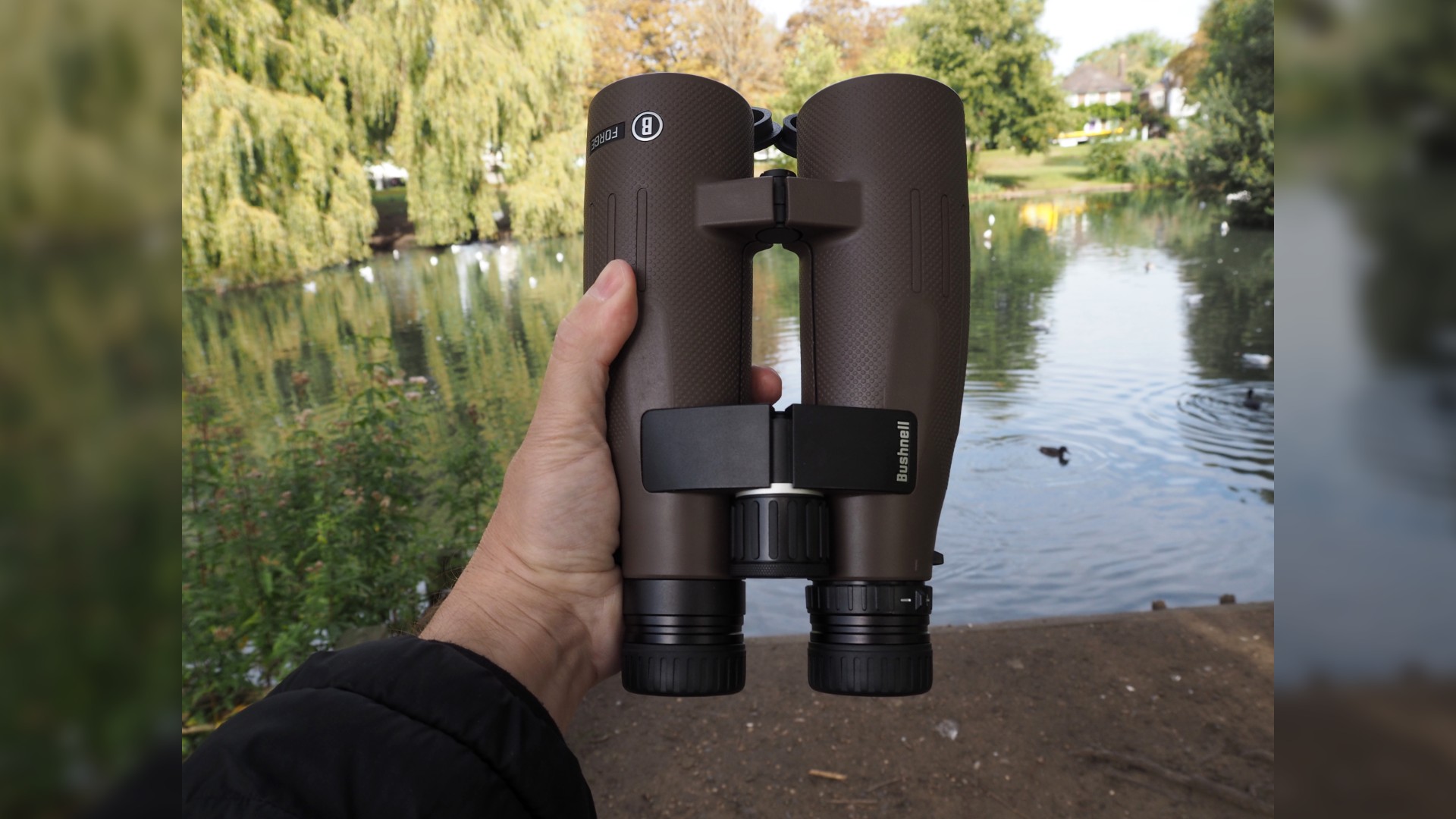
Despite the high-quality look and feel, these classic roof prism type binoculars are chunky. They weigh 2.2lbs / 1kg, which is a significant weight for long sessions.
While we initially thought the significant bulk would make the Bushnell feel heavy in the palms, and increasingly so over time, our hands-on tests revealed that the weight is fairly evenly distributed so the strain is much less than you might think. In the box you’ll find a familiar shoulder strap for threading through the provided lugs, and also a harness that helps evenly distribute the weight across shoulders and chest, if required. Bushnell also throws in a cleaning cloth, a tripod adapter, and an Allen/hex key — it’s as if they’ve thought of everything. There’s no tripod screw thread provided on the body of the binocular itself, which is why the adaptor is included if you need one for extra stability.
The surface of the device is roughened for a firmer grip. Combined with the overall weight, and shape of the design, we rarely felt these binoculars would slip from our grip. A middle hinge mechanism also allows the width of the binoculars to be manually adjusted with a simple push or pull on the lens barrels. This enables you to comfortably match the distance between your own eyes, known as the inter-pupillary distance.
Bushnell Forge 15x56: Performance
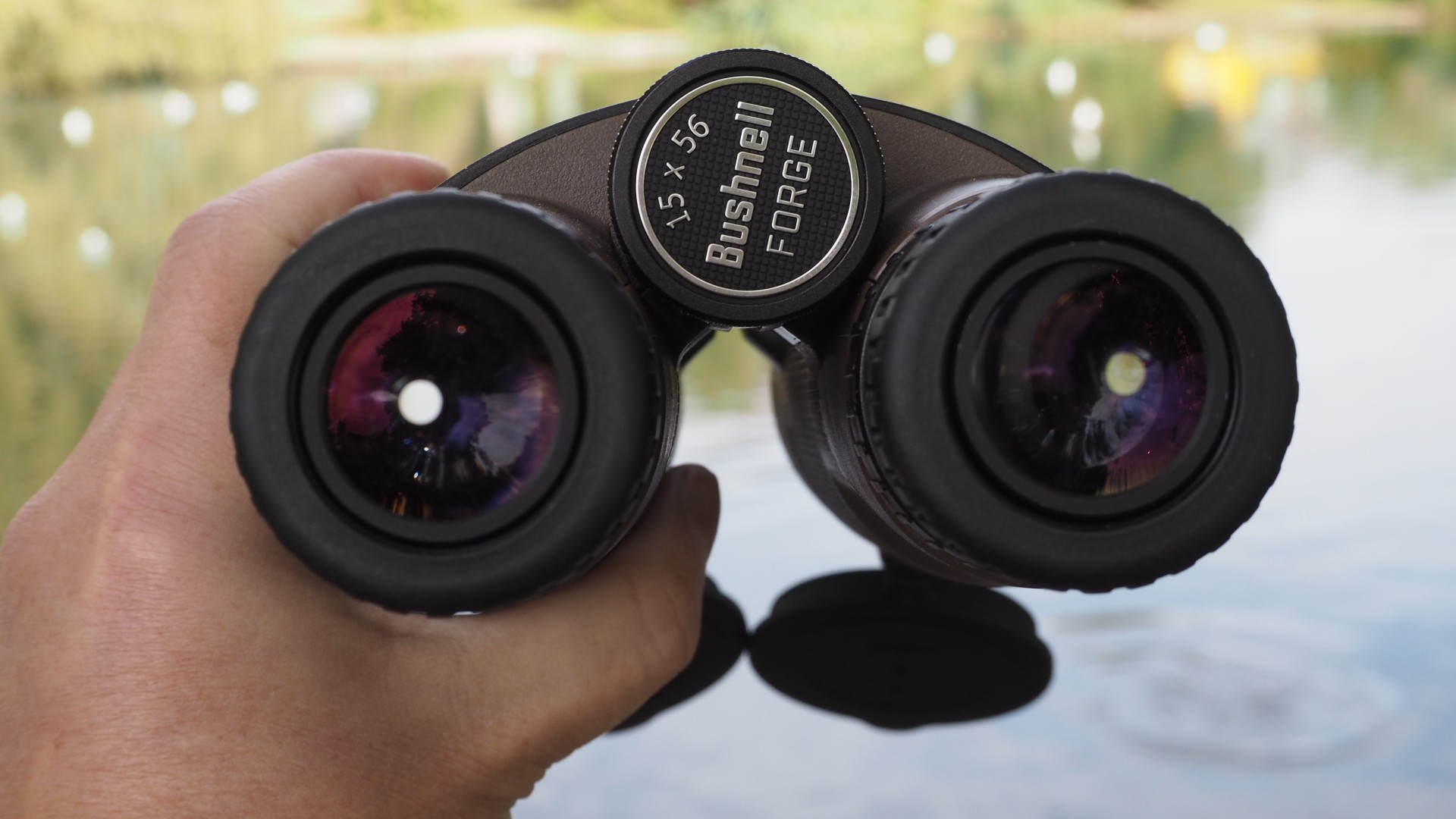
Let’s get the Bushnell’s one weakness out of the way first - they’re not so good at short range, with a minimum focus distance of around 12ft, rather than the typical 9ft. That’s not a huge deal for binoculars, which are for seeing things that are far away, but it’s worth knowing about.
Those users seeking detailed close ups from afar — examining perhaps the plumage on a head rather than the surrounding environment — are the ones who will benefit the most from these Bushnell Forge 15x56 binoculars. Focus adjustment is easily made via the large, if slightly stiff, ridged wheel that sits between the eyepieces, augmented by a dioptric control wheel encircling the right eyepiece.
Comparing a 10x magnification side-by-side with the 15x magnification offered by the Bushnell Forge 15x56 reveals quite a pronounced difference. These binoculars fill the view with a subject, while the 10x magnification binoculars present the same subject as just one element within a larger frame. This suggests that once you’ve gone ‘big’ it will be hard to go back. If you're buying binoculars specifically because you need a decent length, you want value for money, and you like plenty of kit stuffed into the box, the Bushnell Forge 15x56 binoculars are definitely worth checking out.
Should you buy the Bushnell Forge 15x56?
Designed with power-users in mind, who will relish the high magnification and large and bright objective lens on offer, the Bushnell Forge 15x56 binoculars are a good buy if you’re serious about your hobby. However, they won’t be for everyone, due to their relative bulk and above-average weight. Those seeking a pocketable, casual pair of binos for travel or sightseeing should go for something with lower size and magnification.
This model is well suited to bird watchers and wildlife lovers who will be observing their quarry from a fairly static standpoint, and will appreciate the clarity and detail that a premium lens and body construction can deliver. Waterproof and fog proof with it, these nevertheless deliver value for money as well as a sharp performance. If you do decide to invest, the robust and sturdy shell should mean that keen observers will benefit from years of use.

If this product isn’t for you
A high magnification and a large objective lens size necessitates a bigger build and inevitably leads to a heavier pair of binoculars. If you’re worried about shake, some form of built-in image stabilization might be for you. Our top pick here is the Canon 10x42L IS WP, which is the same quality level, but with image-stabilization thrown in too. The Canon’s magnification isn’t quite as high as what’s on offer here, nor the lens quite as big, but it will provide a steadier view. They are considerably more expensive than the Bushnell's though, costing around $1500.
If you're looking for something smaller and cheaper than these chunky Bushnell binos, then we'd recommend checking out the Olympus 8x25 WP II binoculars. You can pick up a pair from around $90 on Amazon at time of writing.
Gavin has over 30 year experience of writing about photography and television. He is currently the editor of British Photographic Industry News, and previously served as editor of Which Digital Camera and deputy editor of Total Digital Photography.
He has also written for a wide range of publications including T3, BBC Focus, Empire, NME, Radio Times, MacWorld, Computer Active, What Digital Camera and Rough Guide books.
He also writes on a number of specialist subjects including binoculars and monoculars, spotting scopes, microscopes, trail cameras, action cameras, body cameras, filters, cameras straps and more.
